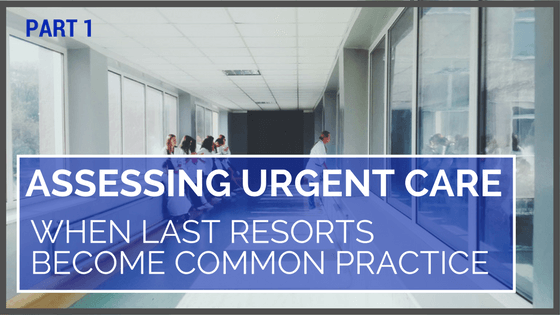You wake up with a cough. It’s not a bad one, you decide, and definitely not enough to keep you home from work. Rent’s due in a week, and you know that missing out on the ten hours of the construction work your boss found you would put you awfully close to not being able to pay up. So, you drink some water and hope for the best as you take the bus to the site. By the time you leave, nausea and dizziness have joined your list of symptoms. You feel sick enough to decide that you should probably schedule an appointment with your primary care physician. But when you call the next morning before work, you find out that he’s booked up for the next three days straight – and that the first available appointment slot falls during your workday. You hang up without reserving it.
Briefly, you wonder if you should take your cough to the closest emergency room or to that urgent care center five blocks down. But, you wonder, is your cough “urgent” enough? Probably not – but you rationalize that it might be, if you leave it untreated for too long. You pick up your coat and head for the urgent care center; within two hours, you’re headed back home with a diagnosis, prescription, and treatment plan in hand.
Emergency departments and urgent care centers are meant to provide quick medical treatment during crisis situations. Yet, more Americans than ever flock to them for routine illnesses and non-pressing hurts. According to statistics provided by the CDC in 2014, approximately 32% of ER patients are seen for under 15 minutes – and only 7.9% of all visits result in hospital admission, suggesting that crisis cases are few and far between. Despite their titles, emergency and urgent health service centers are drawing in patients who would normally fall under the care of primary care physicians. The question is, why?
Convenience and speed appear to be strong motivators. A study published in 2009 in the BMC Health Research journal found that “54% of patients reported choosing [Urgent Care] due to not having to make an appointment, 51.2% because it was convenient, 43.9% because of same day test results, 42.7% because of ability to get same-day medications.” In other words, the surveyed patients were using emergency care services as a substitute for a primary care physician. More troubling, 67.9% of the participating patients lacked a primary care provider.
This is an issue for a number of reasons. Firstly, the reliance on emergency services for primary-care ills pulls resources and time away from more pressing cases and places greater expense on the patient in the long term. Secondly, patients with chronic conditions who only seek out emergency care risk their long-term health. One of the most important aspects of primary medicine is that it centers on prevention and long-term health, rather than short-term solutions. In an ER, a doctor might prescribe a medication to treat a patient’s cough; a primary physician would try to figure out why that cough recurred twice in the past month. Moreover, studies have found that patients who rely on primary care services are more likely to have crucial preventative treatments such as flu shots, cholesterol tests, and PAP smears. The conclusion we need to draw here is clear and sobering: those who seek out emergency care for immediate, non-critical problems might feel better in the short term, but they certainly won’t be as healthy ten or fifteen years down the line.
Continue to Part II.


